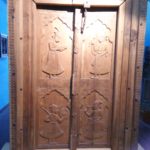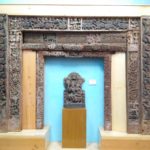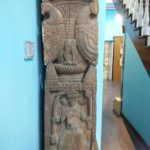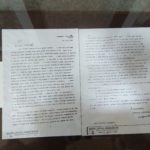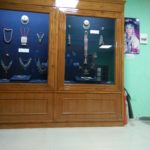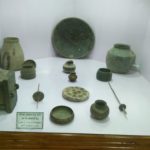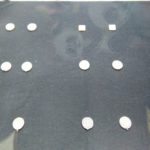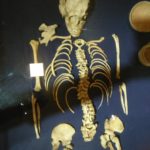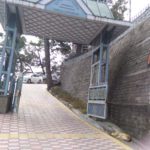
 Keekli Interns, November, 2018, Kiran Thakur & Ritika Chauhan (St Thomas School)
Keekli Interns, November, 2018, Kiran Thakur & Ritika Chauhan (St Thomas School)
The state museum of Himachal Pradesh is situated in Chaura Maidan, Shimla, which is an extraordinary place to explore and learn its rich heritage, history, rulers, cultures, languages and cuisines. Inaugurated on 26th January, 1974, the museum is housed in a Colonial building known as ‘Inverarm’. It was then made to collect and preserve the ancient artistic, historical, archaeological, ethnology and to treasure the cultural past of the State.
 The exhibits placed in the museum are organised and displays have been housed chronologically in several galleries like the prehistoric gallery, wood carving gallery, archaeology gallery, wall painting gallery and numismatic gallery, among others. The museum’s ground floor consists of two rooms, in the first room there are various sculptures, terra cottas from first to the twentieth century of Gupta period, Kushana period, Shunga period, Maurya period. The second room displays few historical sculptures of Indian gods and goddesses. It mainly reflects the traditional culture of India and models of extinct animals. To the left there is a wood carving gallery. It consists of remains of wood panels of ancient temples and traditional wood artistry is found here. This type of carving is done on deodar, pine, walnut and sheesham wood. The important centres of wood carvings are Chamba, Kullu, Kinnaur and Shimla.
The exhibits placed in the museum are organised and displays have been housed chronologically in several galleries like the prehistoric gallery, wood carving gallery, archaeology gallery, wall painting gallery and numismatic gallery, among others. The museum’s ground floor consists of two rooms, in the first room there are various sculptures, terra cottas from first to the twentieth century of Gupta period, Kushana period, Shunga period, Maurya period. The second room displays few historical sculptures of Indian gods and goddesses. It mainly reflects the traditional culture of India and models of extinct animals. To the left there is a wood carving gallery. It consists of remains of wood panels of ancient temples and traditional wood artistry is found here. This type of carving is done on deodar, pine, walnut and sheesham wood. The important centres of wood carvings are Chamba, Kullu, Kinnaur and Shimla.
In the front of this gallery, there is a grand staircase which leads to the second floor. The walls are displayed with the paintings of Rang Mahal of Chamba. To the opposite side of the staircase there is one big hall with different rooms dedicated to the Indian army. It consists of ancient and modern arms and there are some statues placed of junior commissioned officer of the Parachute Regiment, officers of Punjab Regiment in the UN Mission and officers of the Dogra Regiment, etc., as a mark of honour. Walking straight, it leads to another room which is entitled with as the Wall of Fame, which houses the pictures of war heroes, namely Havaldar Piru Singh of Indo-Pak War, Subedar Joginder Singh, among others and consists of some photos of various soldiers who have won the Param Vir Chakra, Vir Chakra and Victoria Cross from Himachal.
Walking straight, a room displayed few pictures of different wars which India fought after the Independence. There were huge boards with photographs and detailed information about the Kargil War, Indo-Pak War, India-China War. Thereafter, this room lead to another room which described about the pivotal role of ARTRAC in training of the Indian Army.
To the left was the Contemporary Art Section, which consisted of some traditional religious sculptures. You could see the Pahari miniatures, with some embroidery done on cloth. To the right of this room there was a corridor which displayed some vintage cameras. This corridor leads to a room which is dedicated to Himachali culture, and the passage itself had displays of statues of different brides from 12 districts of Himachal which reflected the traditional culture of the state. Further ahead you could see more statues depicting various dance forms of India.
To the right there is a hall which is entitled in the memory of Mahatma Gandhi which consisted of some letters written by Gandhi to Hitler and Anne Besant. The walls display detailed information about the movement launched by Gandhi. In the front there is a big room which displays few ancient ornaments of Himachal like the necklace, utensils, etc. It strongly reflects the culture and tradition of our state. Another room was dedicated to ancient coins, showcasing different coins of different states of India like Kashmiri, Mughal, Sultanate, post Gupta period, Kushana, post Mauryan, Indo-Greek coins, and contemporary currency and coins.
Another room showcases different drawings of Himachal from different districts like Kinnaur, Kullu, Gujjar, and displays of Pahari woollen blankets can also be seen. To the front there was another room which displayed a skeleton found in HP and some pottery pieces and stone-age tools.
The Attic of the museum houses a library which stores manuscripts and books on history and archaeology. This museum holds valuable information on tradition, customs and heritage of India.
A must visit for school students as this museum teaches critical thinking and empathy to children. A nominal entrance fee needs to be paid, extra for videography, and the visiting hours are 10 am to 5 pm daily; closed on Mondays and national holidays.
This museum is a must visit when holidaying in Shimla.



